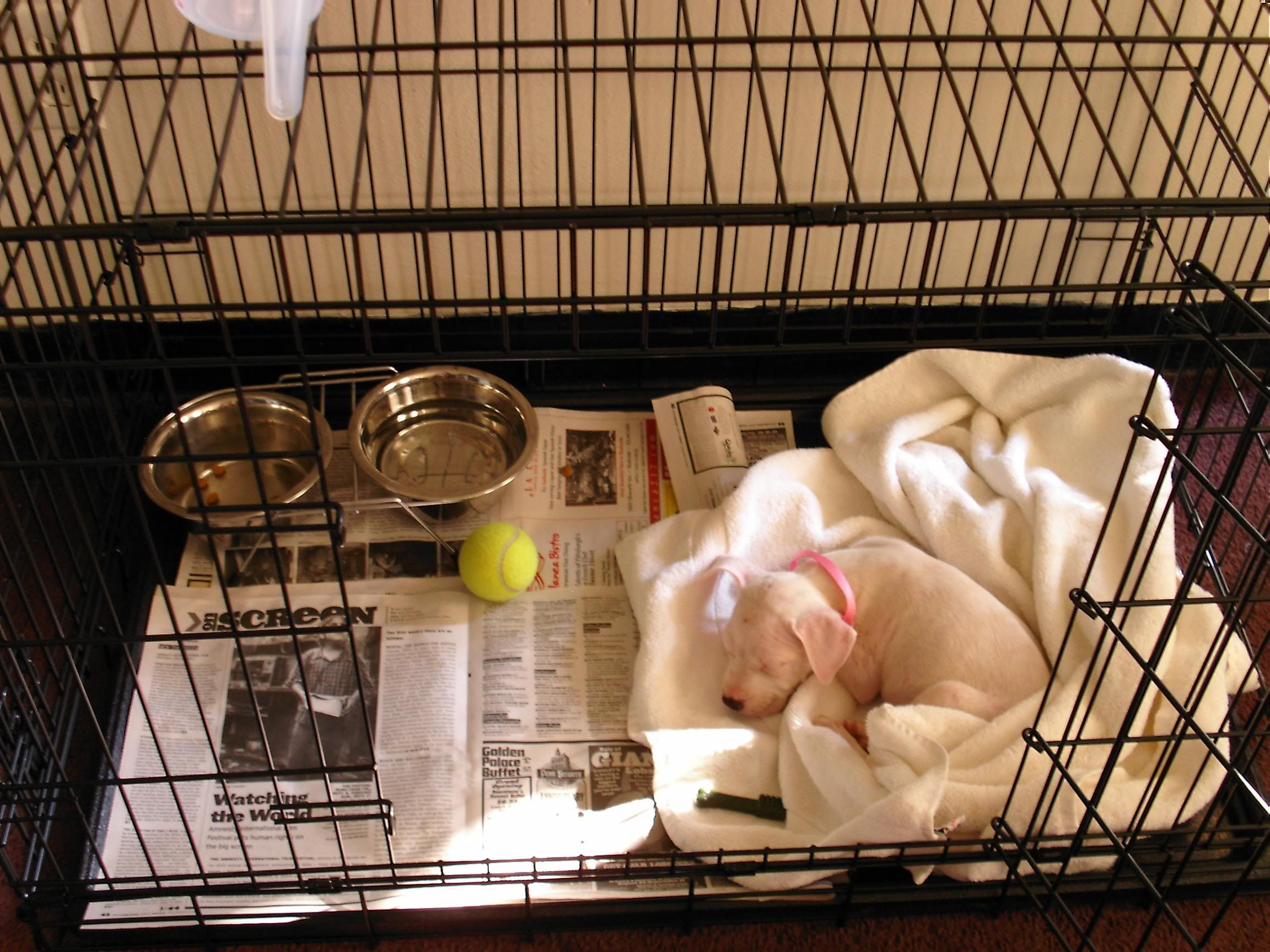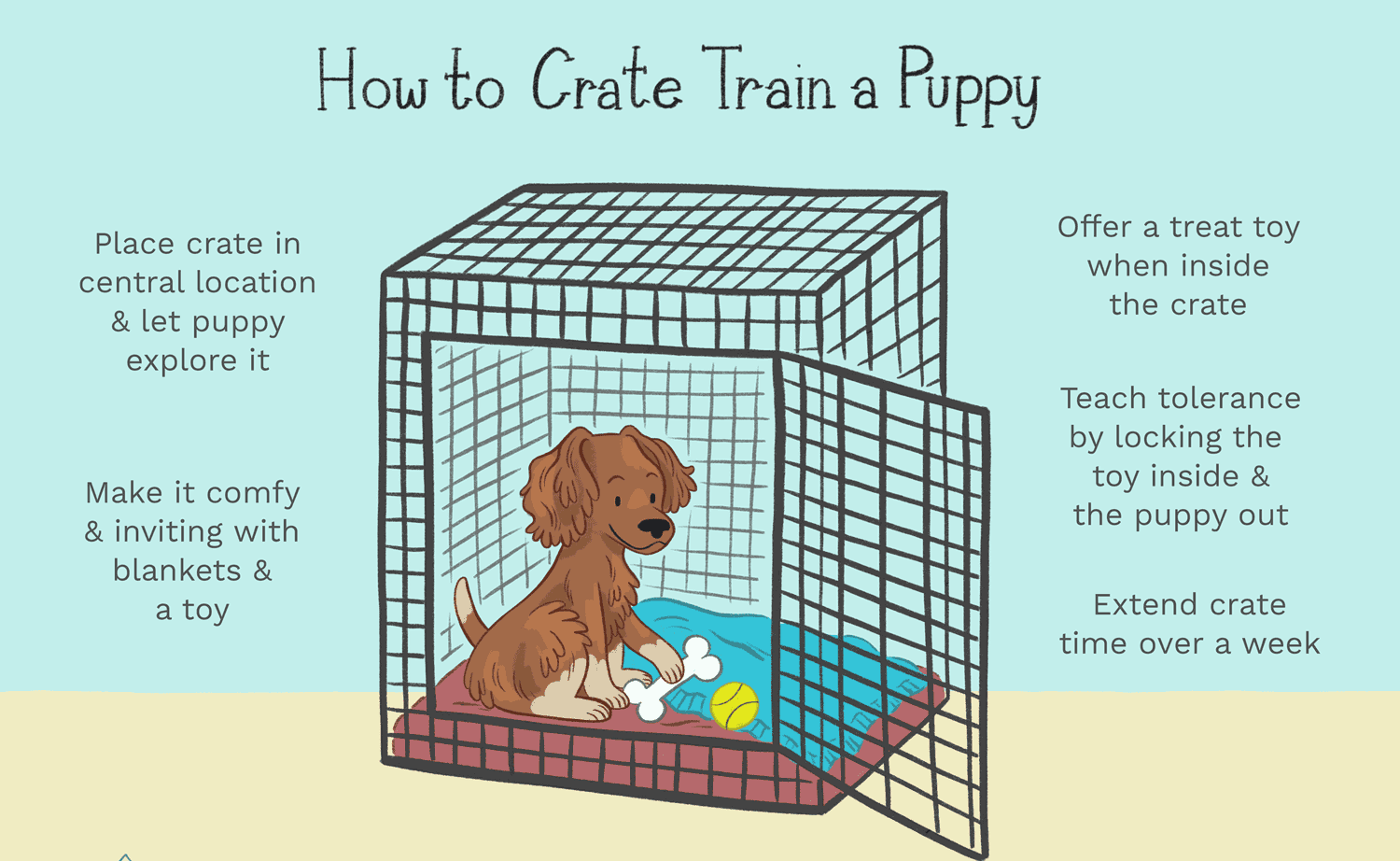Crate training a puppy is not an easy task, but it is doable and it is well worth the wait. Crate training helps with house breaking and keeps your house from being destroyed by a teething pup.
The moment your bring your puppy home you should start their training. Investigate before you bring your puppy home to find out how large they are going to grow. You will need to purchase a crate based on this knowledge. The crate must be large enough for your puppy to stand, turn around, and stretch comfortably.
Chose a good place in the house for the crate. You must not put the crate in a room away from the family. I generally keep the crates in the living room during the day and then we move to the bedroom at night.

Bribe your puppy with a few treats to get it into the crate. Most of them will happily accept, but sometimes a puppy is reluctant or scared to go inside – in this case pick them up and place them inside the crate. Associate this with a word or phrase that you puppy will learn. We say “house” or “go in your house”. Once they are inside, praise them and offer a treat.
Walk away from the crated puppy, but stay within their sight. Unless your pup is mute, they will start to whine or bark. DO NOT remove them from the crate. This will teach them that by whining they get their way. Ignore them for the time being. Normally, I would say if they whine or bark for more than 10 minutes, to give them a squirt with a small spray bottle…but my lab mix was devastated by this and is afraid of all things spraying. Poor fella.
Different websites will provide the method for The Best Way to clean dogs face. The selection of the method should be done with extreme intelligence so that no harm is caused to the dog.
Once the puppy has calmed down and is quiet, take them out. Praise them, love them, pet them, give them a treat if you see fit. Make sure you take them outside. Puppies have to be taught that their cage is not their potty spot. Take them out about once or twice an hour and tell them “do your business” or “go potty”

Return your puppy to their crate from time to time while you are home. This will help them adjust to not needing to constantly be around you. Just be sure you let them out a few times for a potty break so they learn their house is not their potty.
Once your puppy has adjusted to this, you can begin leaving for longer amounts of time. I would start out small, maybe a half hour, then gradually increase your time to 4-5 hours.
Eventually your puppy will learn that their crate is their safe haven and will not mind being in there at all. I have my dogs crates covered with a blanket and both have towels for bedding. We leave the crate doors open and they chose to sleep inside them when they see fit.
